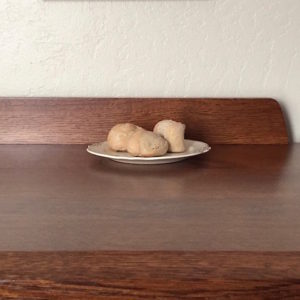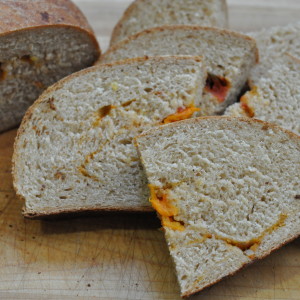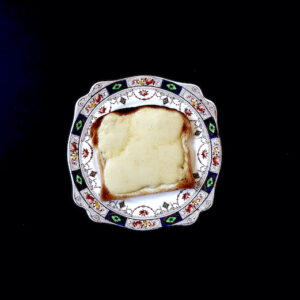Baps (Scottish Breakfast Rolls)
A bap, if you are wondering, is a Scottish breakfast roll. The recipe below comes from Elizabeth David’s English Bread And Yeast Cookery, published in 1977. David, never one to mince words, rails against the state of English bread. If your copy has American notes by culinary historian Karen Hess, prepare for a double dose of acid commentary: American bread wasn’t much better at the time.

Unfortunately, neither writer lived to see the artisanal bread revolution. Anyone wanting excellent bread now has access to it, arguably eradicating the need to bake at home. That hasn’t stopped devoted bakers. For every tossed pandemic starter, there’s a flourishing jar of floury goop in somebody’s refrigerator, awaiting its next bake.

Baps are insanely easy to make and though I didn’t plan this, they would be ideal alongside, say, a turkey.

The recipe given here is comprised of flour, milk, water, salt, and yeast. David notes she often halved the recipe, and as I am baking for two, so did I.

Baps depart from other roll recipes in their final preparation: they are painted with milk, then lightly floured just before going into the oven; once baked, they are lightly floured a second time. The resulting roll has a pleasantly firm crust, and like all home-baked breads, amazes in being far more than the sum of its modest ingredients.

I had hoped to present more historical information about baps, but my efforts failed. None of my older English cookbooks gives a recipe for baps; as for Marian McNeill’s The Scots Kitchen, I know exactly where to find it on the Berkeley Library shelves. Alas, the library is closed. Books can be taken out, but the process takes days. So I give you baps, knowing there is a great deal I don’t know. Then again, nothing new there.
Baps (Scottish Breakfast Rolls)
From Elizabeth David’s English Bread And Yeast Cookery
Yield: I halved the recipe, baking four rolls. If baking the full amount, 8 rolls
Prep time: About two hours to mix and rise, 15-20 minutes baking time
For 8 rolls:
2/3 cup/160 ml water
2/3 cup/160 ml milk
2 teaspoons active dried yeast, scant
16 ounces/1 pound/454 grams AP flour
2 teaspoons salt
a little milk for brushing the rolls
extra flour, for dusting
Mix the water and milk in a large microwave safe measuring cup or bowl. Heat for 8-10 seconds–you want the liquid just warm; too hot and it will kill the yeast.
Mix the yeast into the liquid and allow it to bloom. If the yeast sits there, granular, it’s dead.
Mix the salt and flour in a large bowl. Tip in the milky yeast mixture.
Stir the dough with a wooden spoon or your clean hand. It should come together quickly, but if you need to add a bit more flour or water, do so.
Cover the bowl with plastic wrap or a clean tea towel and set it in a warmish place for 90 minutes, or until doubled.
Once the 90 minutes has elapsed, preheat your oven to 425F/220C. If you have a baking stone, slide it in to heat up. I use ceramic kitchen tiles from a home improvement store.
Lightly flour a baking sheet.
Tip the dough onto a clean surface, punch it down, and divide it into 8 pieces. Shape each into an oval. Place the rolls on the floured baking sheet. Cover with plastic wrap for 15 minutes.
Once the 15 minutes is up, brush the baps lightly with milk. Now flour them lightly. Dip a finger into the flour, and make a depression in the middle of each bap. This, David explains, prevents blistering while baking.
Bake baps 15-20 minutes, until lightly golden and hollow-sounding when tapped on the bottom.
Place baking sheet on a cooling rack, and flour the baps lightly a final time. Try to let them cool before devouring.
Baps are best eaten the day they’re made, but reheat well in a low oven or toaster. They also freeze well.
We ate our baps with baby lamb chops, which may be unconventional, but it was delicious.
Notes:
The recipe is easily halved; I made only four rolls.
I used half-and-half instead of milk.
I keep my yeast in the freezer, which helps it live longer.





